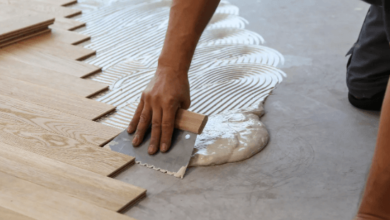Natural Pond Vacuum Solutions for a Cleaner, Healthier Water Garden

A backyard pond can be a peaceful sanctuary, but it takes more than good intentions to keep it clean. Under the surface, layers of sludge, algae, and debris silently build up. Without regular cleaning, this hidden mess can endanger aquatic life and ruin your pond’s clarity.
That’s where the Natural pond vacuum comes in an efficient, easy-to-use tool that removes harmful waste while preserving your pond’s ecosystem. Whether you’re a seasoned pond owner or just starting out, understanding how and when to use one will make maintaining your water garden much simpler.
What Builds Up in Your Pond and Why It Matters
At a glance, your pond might look clean—but beneath that calm surface lies a gathering storm of organic waste. The main culprits include:
- Decomposing leaves and twigs
- Fish waste and uneaten food
- Algae blooms and dead plant matter
When these elements break down, they create a thick layer of muck at the pond’s bottom. This not only looks bad but also throws off the balance of the entire ecosystem. Without proper removal, the sludge becomes a breeding ground for parasites, foul odors, and harmful bacteria.
How a Natural Pond Vacuum Works
A natural pond vacuum functions similarly to a regular wet vacuum but is designed specifically for aquatic use. It uses suction to remove sludge, sediment, and debris from the bottom of the pond and either traps it in a collection bag or directs it away from the water feature entirely.
Many models don’t require chemicals or detergents, making them safe for fish, plants, and beneficial bacteria. They’re especially useful for maintaining a natural or eco-style pond where you want minimal interference with the biological balance.
Choosing the Right Vacuum for Your Pond Type
Not all vacuums are created equal. Depending on your pond’s size, depth, and power access, different models may serve you better.
Cordless Models
Ideal for smaller water features or areas with limited access to electricity, these models are highly portable and user-friendly. Though they tend to offer less power, they’re great for spot cleaning.
Electric Vacuums
Plug-in styles are stronger and better suited for medium to large ponds. They usually come with multiple nozzles and adjustable settings for different depths and debris types.
Manual Hand-Pump Vacuums
These budget-friendly tools are great for light cleaning or small backyard ponds. However, they require significant manual effort and are best used for maintenance rather than deep cleaning.
Robotic Pond Cleaners
Though rare and more expensive, some robotic models offer fully automated cleaning with minimal effort. These are best for advanced users or large-scale pond installations.
When to Use a Natural Pond Vacuum
Knowing when to clean is just as important as how to clean. Here are key times when a pond vacuum proves invaluable:
Spring Awakening
As winter ends, your pond is likely filled with leftover leaves, sediment, and decomposed material. Vacuuming before the growing season ensures a healthy start.
After Algae Blooms
Once an algae outbreak is under control, dead algae can sink and rot at the bottom. A vacuum removes this mess before it encourages a second wave.
Fall Cleanup
As autumn leaves fall, many will settle in your pond. Clearing them out before freezing weather sets in helps reduce decomposition over winter.
Monthly Touch-Ups
Regular light vacuuming once a month prevents buildup and makes full cleanings less intensive.
Additional Benefits Beyond Clean Water
The advantages of using a natural pond vacuum extend far beyond appearance:
Healthier Fish Habitat
By removing excess sludge, you eliminate many parasites and harmful bacteria that thrive in stagnant waste, giving your fish a safer home.
Less Stress on Filters
Vacuuming reduces the load on your filtration system, allowing it to function better and last longer.
Free Organic Fertilizer
Collected sludge is rich in nutrients and can be repurposed as compost or garden fertilizer—turning waste into something useful.
Smart Habits to Support Your Vacuum’s Efforts
Even the best pond vacuum can’t do it all. Supplement your cleaning routine with the following practices:
Skim Regularly
Use a hand net to remove leaves, twigs, or floating debris before they sink.
Feed Responsibly
Only offer fish what they can consume in a few minutes. Excess food often becomes sludge.
Use Beneficial Bacteria
These natural additives help break down organic waste and reduce odor.
Manage Sunlight
Install floating plants or shading devices to slow algae growth triggered by intense sunlight.
Selecting the Best Vacuum for Long-Term Use
Here’s what to consider when shopping for a vacuum that meets your pond’s needs:
- Pond size: Larger bodies of water demand stronger suction and longer hoses.
- Depth and slope: Choose a vacuum with adjustable heads if your pond floor isn’t flat.
- Power source: Consider where outlets are located or opt for a cordless model.
- Waste removal method: Some vacuums collect debris in bags, while others expel it to your yard. Choose based on your maintenance preference.
Always review user feedback and check for warranties or support options when purchasing. The right equipment saves time, prevents stress, and delivers lasting results.
Creating a Pond Care Schedule That Works for You
Consistency is key. A quick reference for your pond vacuum usage might look like this:
- Early spring: Deep clean after snowmelt
- Late spring to summer: Monthly light vacuuming
- Fall: One or two thorough cleans as leaves fall
- Winter: Minimal vacuuming unless your pond is in a warm region
Pair this schedule with regular observation. Cloudy water, bad smells, or sluggish fish are signs it’s time to act.
Final Thoughts on Keeping Your Water Garden in Shape
A pond is more than just water—it’s a living, breathing ecosystem. Keeping it clean requires a balance of the right equipment, smart habits, and regular attention. With a dependable Natural pond vacuum, you can simplify the most demanding part of maintenance and enjoy your water garden without stress.
Whether your pond is a cozy backyard feature or a large koi showcase, vacuuming is an essential step that supports every living thing within. By removing debris, reducing disease, and boosting clarity, this tool ensures your pond remains a serene and sparkling highlight of your landscape.
Clearing Up Confusion
Can I vacuum my pond while fish are inside?
Yes. Most natural pond vacuums are safe for use with fish present. Just avoid direct contact with them and use gentle suction settings.
What’s the difference between a pond vacuum and a regular shop vac?
Pond vacuums are built for water and sludge, featuring filters, longer hoses, and safety features that standard shop vacs lack. Using a shop vac risks damage and poor results.
How often should I vacuum my pond?
A light vacuuming once a month works well for most ponds. Deeper cleanings are best done 2–4 times a year, especially during seasonal transitions.
Do I need to remove plants before vacuuming?
No, most vacuums allow you to work around aquatic plants. However, be cautious around delicate roots or floating species.
Is sludge harmful to my pond?
A small amount is natural, but too much leads to water quality issues, foul smells, and fish stress. Removing it helps your pond thrive.





